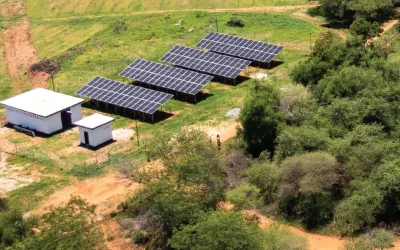Zim set to become renewable energy hub: UNDP
Zimbabwe is primed to become a renewable energy hub in the region through the implementation of its lithium value chain initiatives, according to the United Nations Development Programme (UNDP) resident representative, Ayodele Odusola.
The global energy landscape is swiftly transitioning to clean energy, marked by a comprehensive shift from toxic fossil fuels to smart renewable power sources such as solar, wind, hydroelectricity and green hydrogen.
Some developed nations have set stringent deadlines to completely ban the use of fossil fuel powered vehicles, while calls to also stop the use coal and sponsor new projects are getting louder.
It is against this backdrop that Zimbabwe, which is the seventh largest producer of lithium in the world, is positioning itself to be a major player in this new energy revolution by investing significantly in the value chains.
This shift towards sustainability has also accelerated the conversation around more eco-friendly storage solutions, especially lithium powered energy reservoirs.
Lithium is essential in producing high energy-density rechargeable batteries, attributed to its substantial electrochemical potential.
Zimbabwe has huge lithium deposits and several lithium mines are at different stages of development across the country and there are growing calls for the need to push harder for value addition and beneficiation so that the country derives maximum benefits from its lithium.
Some of the lithium mines from those at exploration phase to those that have reached full-scale operations include: Kamativi Lithium Mine, Bikita Minerals, Arcadia Lithium Mine, Sabi Star Lithium Mine, MIRRORPLEX Lithium project, Zulu Lithium and Tantalum Project and Step Aside Lithium project.
To that end, Odusola said the value addition of lithium will significantly benefit the country.
Odusola spoke in the context of climate change mitigation measures that can be explored for the benefit of local companies and the general populace.
“An important climate change mitigation effort that Zimbabwe can put in place is to ensure that we put value to lithium,” he said.
“Lithium is the energy of tomorrow and Zimbabwe is the seventh largest producer (of the mineral) in the world and one of the best in Africa.
“If we heavily invest in that area, we will be providing facilities to be able to go into renewable energy and providing opportunities to adapt to electric vehicles and do a lot of storage capabilities within the country and the region and the continent,” said the UNDP chief.
Odusola said UNDP in collaboration with other stakeholders has to date installed 13,6 megawatt solar systems, which account for about 36 percent of the independent power production.
Zimbabwe has licensed 10 new Independent Power Producers (IPPs) to start feeding 271MW of electricity to the national grid under the Government Project Support Agreement (GPSA), which has a pool of close to 40 licensed players with guaranteed implementation.
The 10 IPPs are Mutorashanga Indo Africa Solar with a capacity of 10MW, Guruve Solar Energy Project (5,5MW), De Green Rhino Solar (50MW), Equinox Solar (10MW), Murombedzi Solar (10.5MW), Great Zimbabwe Mini Hydro (5MW), Par Valley Energy (50MW), Acacia Energy (50MW), Energywise Vungu Solar (30MW) and AF Power 50MW.
“We have worked with the Ministry of Health and Child Care under the Solar for Health (SH4F) initiative and there is a kind of partnership between the Government, UNDP and the Global Fund across the world.
“Zimbabwe seems to be the largest beneficiary in terms of the Solar for Health initiative in the continent. We have been able to provide solar to 1053 clinics across the country.
“We have also done several mini-grids with the Ministry of Energy and Power Development, particularly the 120 kilowatt solar system in Dete and 200-kilowatt solar system in Hakwata which will be launched next month.
He noted that 447 solarised boreholes have been sunk for health facilities, home solar systems and bio-digest systems. The various projects account for 13,6 megawatt solar systems which account for about 36 percent of the independent power production, he noted.-ebsinessweekl








